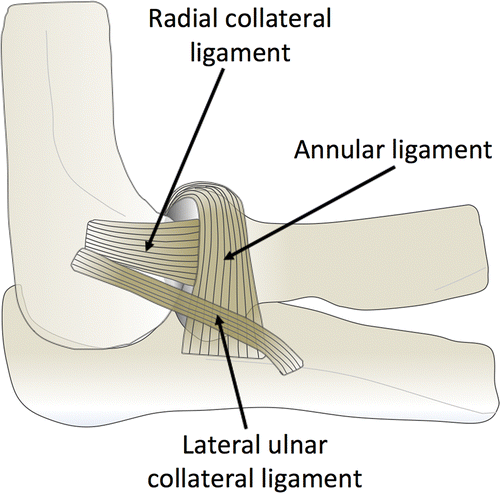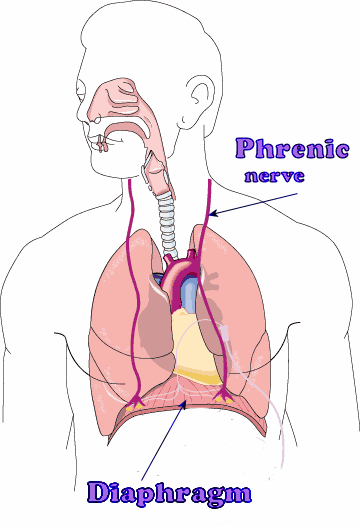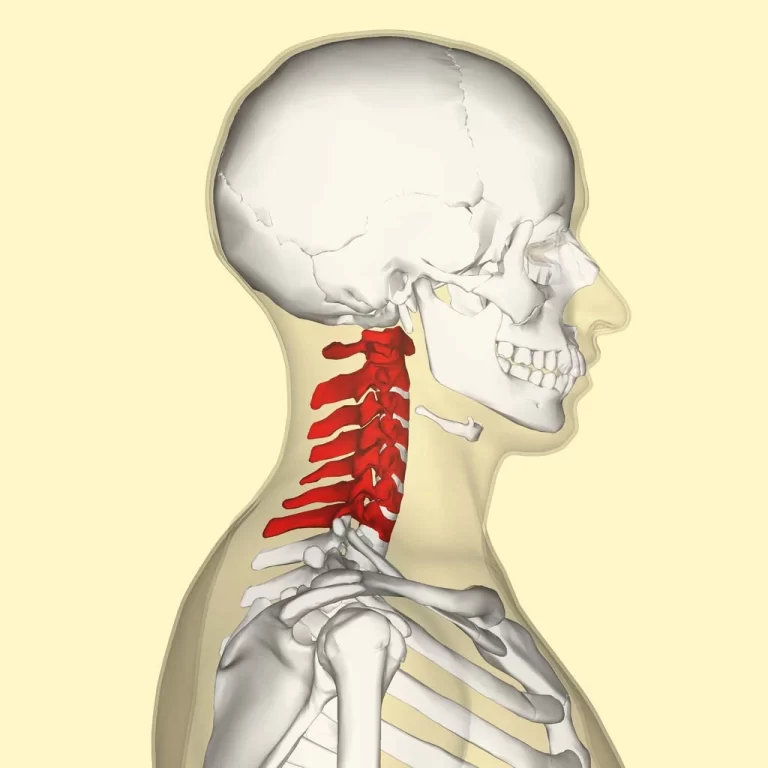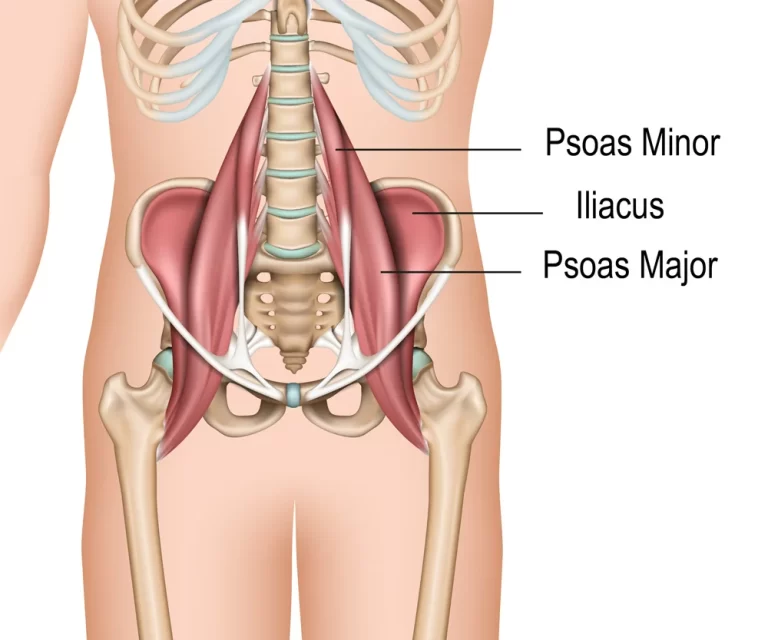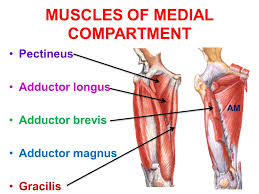Radial Collateral Ligament
Table of Contents
Introduction
The radial collateral ligament is a band of fibrous tissue that connects the lateral epicondyle of the humerus bone to the radius bone in the forearm. It is located in the elbow joint and plays an important role in stabilizing the joint during movements such as bending and straightening the arm.
The ligament is composed of two parts: the annular ligament and the radial collateral ligament proper. The annular ligament surrounds the head of the radius bone and holds it in place against the ulna bone. The radial collateral ligament properly runs from the lateral epicondyle of the humerus to the radial head, providing stability to the elbow joint.
Injuries to the radial collateral ligament can occur as a result of trauma or repetitive stress. Symptoms of an injury to this ligament may include pain, swelling, and instability in the elbow joint. Treatment for an injury to this ligament may include rest, ice, physical therapy, or surgery in severe cases. Proper rehabilitation and strengthening exercises can help to prevent future injuries and improve overall joint function.
Structure of the Radial Collateral Ligament
The lateral epicondyle of the humerus bone and the radius bone in the forearm are joined by a substantial band of fibrous tissue known as the radial collateral ligament. It is located on the outer side of the elbow joint and plays an essential role in stabilizing the joint during movements such as bending and straightening the arm.
The ligament is composed of two parts: the annular ligament and the radial collateral ligament proper. The annular ligament is a ring-shaped structure that surrounds the head of the radius bone and holds it in place against the ulna bone. It allows for rotation of the radius bone around its axis, which is necessary for movements such as twisting the forearm.
The radial collateral ligament properly runs from the lateral epicondyle of the humerus to the radial head, providing stability to the elbow joint. It is divided into three bands: the lateral, oblique, and posterior bands. The lateral band is the thickest and strongest of the three and is responsible for most of the joint’s stability.
The oblique band runs diagonally from the lateral epicondyle to the radial head, providing additional stability to the joint during rotational movements. The posterior band is located at the back of the joint and helps to prevent backward displacement of the radius bone.
Functions of the Radial Collateral Ligament
The radial collateral ligament plays an essential role in stabilizing the elbow joint during movements such as bending and straightening the arm. The ligament connects the lateral epicondyle of the humerus bone to the radius bone in the forearm, providing stability to the joint.
One of the primary functions of the radial collateral ligament is to prevent excessive lateral movement of the elbow joint. The ligament acts as a barrier to prevent the radius bone from sliding too far away from the ulna bone, which could cause instability and discomfort in the joint.
The ligament also helps to maintain proper alignment of the bones in the joint during movements such as twisting or rotating the forearm. The annular ligament, which is a part of the radial collateral ligament, holds the head of the radius bone in place against the ulna bone, allowing for smooth rotation of the forearm.
In addition, the radial collateral ligament plays a crucial role in transmitting forces across the elbow joint. When we use our arms to lift or carry objects, for example, there are significant forces acting on the elbow joint. The radial collateral ligament helps to distribute these forces evenly across the joint, reducing the risk of injury or damage.
In general, the radial collateral ligament is an essential component of the elbow joint, providing stability, alignment, and force transmission capabilities. Any injury or damage to this ligament can result in significant loss of function and mobility, highlighting its importance in maintaining healthy elbow joints.
Blood supply of the Radial Collateral Ligament
The radial collateral ligament receives its blood supply from several sources, including the radial recurrent artery, the anterior and posterior ulnar recurrent arteries, and the interosseous recurrent artery.
The radial recurrent artery arises from the radial artery and provides blood supply to the lateral aspect of the elbow joint, including the radial collateral ligament. The anterior and posterior ulnar recurrent arteries arise from the ulnar artery and provide blood supply to the medial aspect of the elbow joint, including the ulnar collateral ligament. The interosseous recurrent artery arises from the posterior interosseous artery and provides blood supply to the deep structures of the elbow joint, including the annular ligament, which is a part of the radial collateral ligament.
The blood supply to the radial collateral ligament is crucial for its health and function. Any disruption in blood flow to the ligament can result in ischemia or tissue death, leading to instability and damage to the elbow joint. Injuries to the radial collateral ligament, such as tears or sprains, can also disrupt its blood supply, further compromising its healing and recovery. Therefore, maintaining adequate blood supply to the radial collateral ligament is essential for healthy elbow joint function.
Injuries of the Radial Collateral Ligament
The radial collateral ligament is primarily responsible for stabilizing the lateral aspect of the elbow joint and preventing excessive sideways movement of the joint. Activities that involve repetitive or sudden stress on the lateral aspect of the elbow joint can cause injury to the radial collateral ligament. Some common activities that can cause radial collateral ligament injury include:
- Throwing: Throwing a ball or other objects repeatedly can put significant stress on the lateral aspect of the elbow joint, leading to overuse injuries such as radial collateral ligament sprains or tears.
- Weightlifting: Certain weightlifting exercises, such as bench presses or overhead presses, can also put stress on the lateral aspect of the elbow joint, leading to injury to the radial collateral ligament.
- Racquet sports: Racquet sports such as tennis or squash require repetitive gripping and swinging motions that can put stress on the elbow joint and lead to radial collateral ligament injury.
- Martial arts: Martial arts such as judo or jiu-jitsu involve grappling and throwing techniques that can put significant stress on the elbow joint, leading to injury to the radial collateral ligament.
- Falls or direct trauma: Falls or direct trauma to the lateral aspect of the elbow joint can also cause injury to the radial collateral ligament, leading to instability and damage to the joint.
In the end, we can say, any activity that involves repetitive or sudden stress on the lateral aspect of the elbow joint can cause injury to the radial collateral ligament. It is essential to maintain proper form and technique during these activities and to seek medical attention if any pain or discomfort develops in the elbow joint.
Symptoms of the Radial Collateral Ligament Injury
Symptoms of radial collateral ligament injury can vary depending on the severity of the injury. Some common symptoms of radial collateral ligament injury include:
- Elbow Pain: Pain is the most common symptom of radial collateral ligament injury. The pain is usually felt on the lateral aspect of the elbow joint and can range from mild to severe.
- Swelling: Swelling around the elbow joint is another common symptom of radial collateral ligament injury. The swelling can be localized or spread throughout the entire elbow joint.
- Stiffness: Stiffness in the elbow joint is another symptom of radial collateral ligament injury. The stiffness can make it difficult to move the arm or perform daily activities.
- Instability: Radial collateral ligament injury can also lead to instability in the elbow joint. This can cause the joint to feel loose or wobbly, making it difficult to perform certain activities.
- Weakness: Weakness in the affected arm is another symptom of radial collateral ligament injury. This can make it difficult to perform tasks that require grip strength or lifting objects.
In severe cases, a popping or tearing sound may be heard at the time of injury, and bruising may develop around the elbow joint. If you experience any of these symptoms after an activity that involves stress on the lateral aspect of the elbow joint, it is essential to seek medical attention immediately.
Diagnosis of the Radial Collateral Ligament Injury
Diagnosis of radial collateral ligament injury typically involves a physical examination and imaging tests. During the physical examination, a doctor will assess the range of motion in the affected arm and look for signs of swelling, tenderness, or instability in the elbow joint.
Imaging tests, such as X-rays or MRI scans, may also be used to diagnose radial collateral ligament injury. X-rays can help rule out other conditions that may cause similar symptoms, such as fractures or dislocations. MRI scans can provide more detailed images of the soft tissues in the elbow joint, allowing doctors to assess the severity of the injury.
In some cases, doctors may also perform a stress test to assess the stability of the elbow joint. During a stress test, the doctor will apply pressure to the lateral aspect of the elbow joint while moving the arm to see if there is any abnormal movement or instability.
It is important to seek medical attention if you experience any symptoms of radial collateral ligament injury, as prompt diagnosis and treatment can help prevent further damage to the elbow joint and improve outcomes. Treatment options for radial collateral ligament injury may include rest, ice, compression, and elevation (RICE), physical therapy, or surgery in severe cases.
Treatment of the Radial Collateral Ligament Injury
Special test
stress test
A stress test for radial collateral ligament injury is a physical examination that involves applying pressure to the lateral aspect of the elbow joint while moving the arm to assess for abnormal movement or instability. The test is typically performed by a doctor or physical therapist.
During the test, the patient will be asked to sit or lie down with their arm relaxed at their side. The doctor will then grasp the patient’s wrist and apply pressure to the lateral aspect of the elbow joint while moving the arm in different directions. The doctor will be looking for any abnormal movement or instability in the elbow joint.
If there is instability or abnormal movement, the doctor may perform additional tests to determine the severity of the injury. These tests may include an MRI scan or ultrasound to assess the soft tissues in the elbow joint.
A stress test for radial collateral ligament injury is an important diagnostic tool because it can help determine the best course of treatment. If the injury is mild, rest, ice, compression, and elevation (RICE) may be recommended. If the injury is more severe, physical therapy or surgery may be necessary to restore stability to the elbow joint and prevent further damage.
Conservative treatment
Conservative treatment of radial collateral ligament injury involves non-surgical approaches to manage pain, reduce inflammation, and promote healing. The following are some of the conservative treatment options for radial collateral ligament injury:
- Rest: Rest is essential for the healing process of the radial collateral ligament. It is recommended to avoid any activities that put stress on the elbow joint, such as heavy lifting or repetitive motions.
- Cryotherapy: The application of ice to the injured area can help in reducing pain and swelling. It is advisable to apply ice for at least 20 minutes at a time, several times a day.
- Compression: Compression can help reduce swelling and provide support to the elbow joint. A compression bandage or brace may be recommended by a doctor or physical therapist.
- Elevation: Elevation of the injured arm over the heart level can help in reducing swelling and promote healing.
- Medications: Over-the-counter pain relievers, such as acetaminophen or ibuprofen, may be suggested in order to manage pain and inflammation.
- Physical therapy: Physical therapy may be recommended to improve the range of motion, strengthen the muscles around the elbow joint, and prevent further injury.
- Immobilization: In some cases, a splint or brace may be recommended to immobilize the elbow joint and allow the radial collateral ligament to heal.
Overall, conservative treatment of radial collateral ligament injury aims to reduce pain and inflammation, promote healing, and prevent further injury. It is important to follow the treatment plan recommended by a doctor or physical therapist to ensure a full recovery.
Physiotherapy treatment
Physiotherapy treatment of the radial collateral ligament (RCL) involves a combination of exercises, manual therapy, and modalities to promote healing, improve range of motion, and strengthen the muscles around the elbow joint. The following are some of the physiotherapy treatments for radial collateral ligament injury:
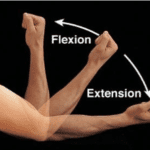
Range of motion exercises: Range of motion exercises involve moving the affected arm in different directions to improve flexibility and reduce stiffness. These exercises may include wrist flexion and extension, pronation and supination, and elbow flexion and extension.

Strengthening exercises: Strengthening exercises aim to improve the strength of the muscles around the elbow joint to provide support and stability. These exercises may include bicep curls, tricep extensions, and wrist curls.
Manual therapy: Manual therapy involves hands-on techniques to improve joint mobility and reduce pain. This may include soft tissue massage, joint mobilization, and stretching.
Modalities: Modalities such as heat, ice, ultrasound, and electrical stimulation may be used to reduce pain and inflammation and promote healing.
Taping and bracing: Taping or bracing may be recommended to provide additional support to the elbow joint during physical activity.
Functional training: Functional training involves specific exercises that mimic daily activities or sports movements to improve available performance.
Education: Education on proper body mechanics and ergonomics may be provided to prevent further injury and promote optimal recovery.
Overall, physiotherapy treatment for radial collateral ligament injury is tailored to the individual’s specific needs and goals. It is important to follow the treatment plan recommended by a physiotherapist to ensure a safe and effective recovery.
Risk factors
The radial collateral ligament (RCL) is a band of tissue that connects the humerus (upper arm bone) to the radius (forearm bone) on the lateral (outer) side of the elbow joint. It provides stability and support to the joint during movements such as bending and straightening the arm, rotating the forearm, and gripping objects. However, certain risk factors can increase the likelihood of radial collateral ligament injury. These include:
- Repetitive overuse: Repeatedly performing activities that involve gripping, twisting, or bending the elbow joint can put stress on the radial collateral ligament and lead to micro-tears or inflammation.
- Trauma: Direct impact or force to the lateral side of the elbow, such as falling on an outstretched hand or being hit by a sports ball, can cause a sudden tear or rupture of the radial collateral ligament.
- Sports participation: Athletes who participate in sports that require repetitive or forceful elbow movements, such as tennis, baseball, golf, or weightlifting, are at higher risk of radial collateral ligament injury.
- Poor technique: Using improper technique during sports or daily activities can put excessive stress on the elbow joint and increase the risk of radial collateral ligament injury.
- Age: As we age, our ligaments and tendons become less flexible and more prone to injury.
- Genetics: Some individuals may be born with weaker or more lax ligaments, which can make them more susceptible to radial collateral ligament injury.
- Previous injury: A history of elbow injuries or surgeries can weaken the radial collateral ligament and increase the risk of future injury.
It is important to recognize these risk factors and take steps to prevent radial collateral ligament injury, such as using proper technique, taking breaks during repetitive activities, and wearing protective gear during sports participation. If an injury does occur, seeking prompt medical attention and following a comprehensive physiotherapy treatment plan can help promote optimal recovery and prevent future injury.
How to prevent injuries of the radial collateral ligament?
Preventing radial collateral ligament (RCL) injury involves taking several steps to reduce the risk factors that contribute to its occurrence. Here are some ways to avoid radial collateral ligament injury:
- Use proper technique: Using proper technique during sports or daily activities can help reduce the stress on the elbow joint and prevent radial collateral ligament injury. For example, when playing tennis or baseball, use a proper grip and swing technique to avoid excessive stress on the elbow joint.
- Take breaks: Taking breaks during repetitive activities that involve gripping, twisting, or bending the elbow joint can help reduce the risk of radial collateral ligament injury. For example, taking short breaks during computer work or repetitive manual tasks can help prevent overuse injuries.
- Wear protective gear: Wearing protective gear during sports participation, such as elbow pads or braces, can help absorb impact and reduce the risk of radial collateral ligament injury.
- Maintain flexibility and strength: Maintaining flexibility and strength in the muscles around the elbow joint can help reduce the risk of radial collateral ligament injury. Stretching and performing strengthening exercises can help improve flexibility and strength in the elbow joint.
- Warm-up and cool-down: Warming up before engaging in physical activity and cooling down afterward can help prepare the muscles and joints for activity and prevent injury.
- Avoid sudden movements: Avoiding sudden movements or jerky motions of the elbow joint can help reduce the risk of radial collateral ligament injury. For example, avoid sudden twisting or bending of the elbow joint during sports or daily activities.
- Seek medical attention: If you experience pain or discomfort in your elbow joint, seek prompt medical attention to diagnose and treat any underlying conditions that may contribute to radial collateral ligament injury.
By taking these preventive measures, you can reduce your risk of radial collateral ligament injury and promote optimal elbow joint health.
FAQ
The radial collateral ligament (RCL) is a thick band of tissue that runs from the lateral epicondyle of the humerus to the annular ligament.
The primary function of the radial collateral ligament is to prevent excessive varus stress on the elbow joint, which occurs when the forearm is forced inward toward the body.
Symptoms of a radial collateral ligament injury may include pain on the outer side of the elbow, weakness or instability in the joint, and difficulty gripping objects.
Treatment options for radial collateral ligament injuries may include rest, physical therapy, bracing, or surgery depending on the severity of the injury.
The radial collateral ligament works in conjunction with other ligaments and muscles in the elbow to provide overall stability and support during movements such as gripping and lifting objects.

